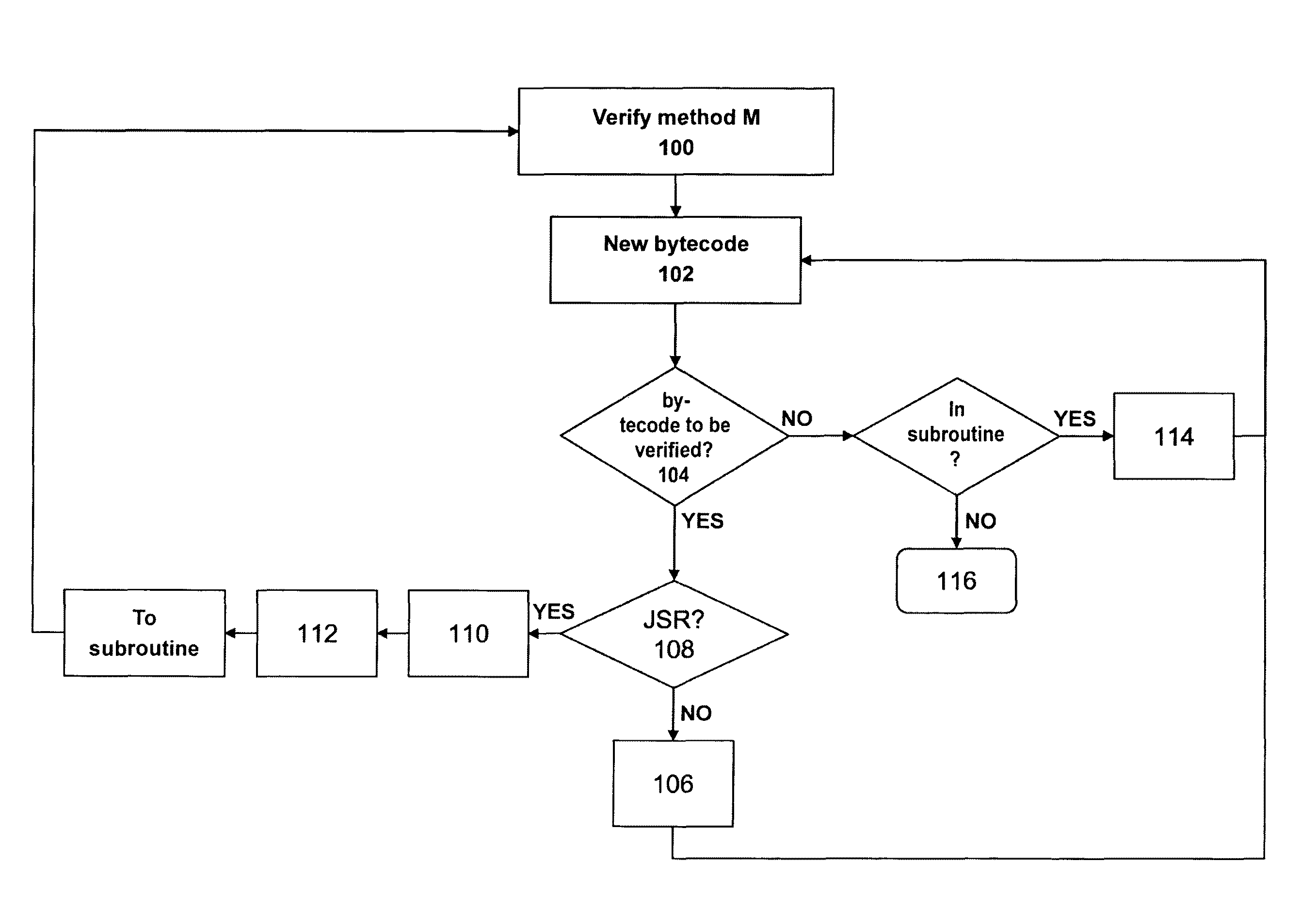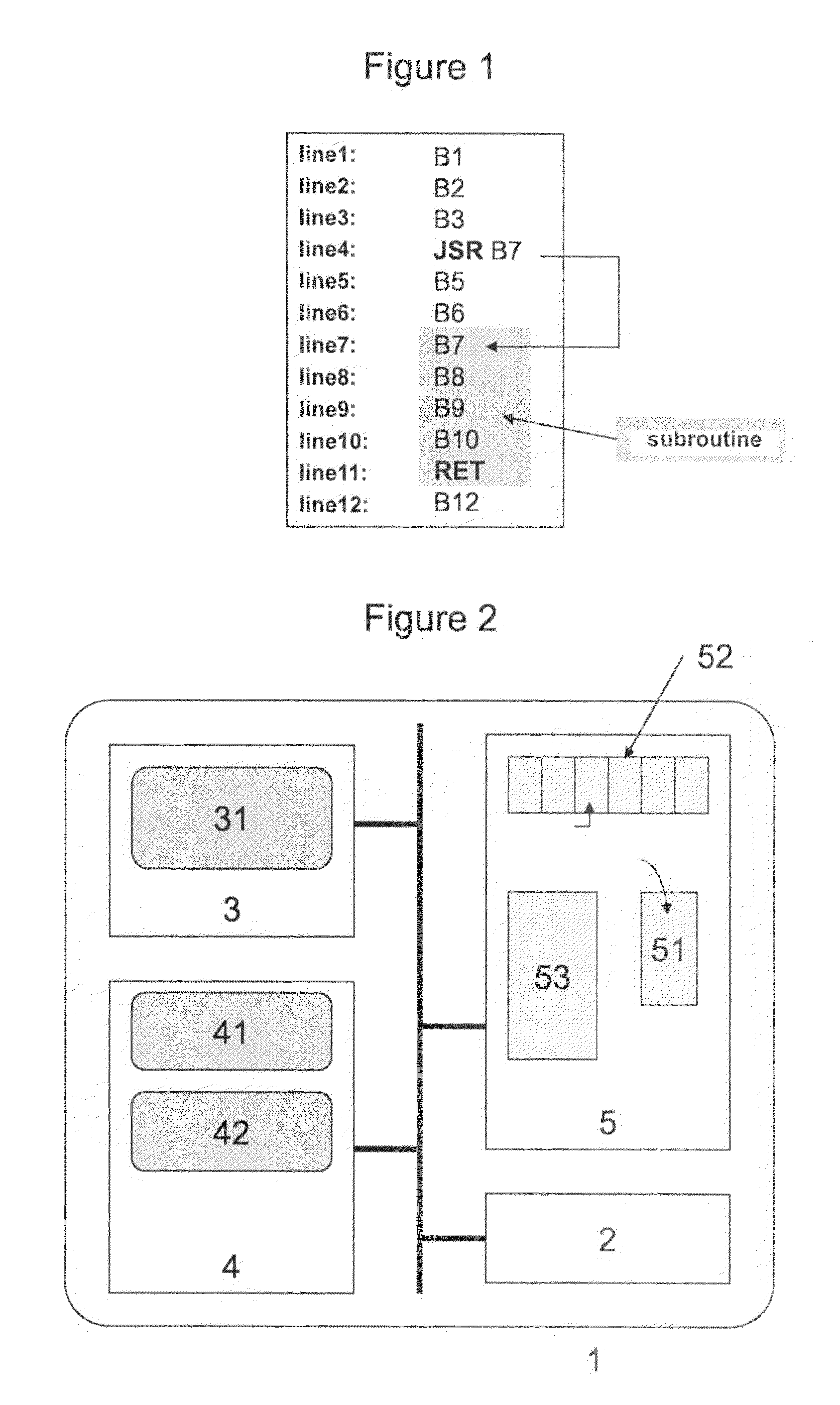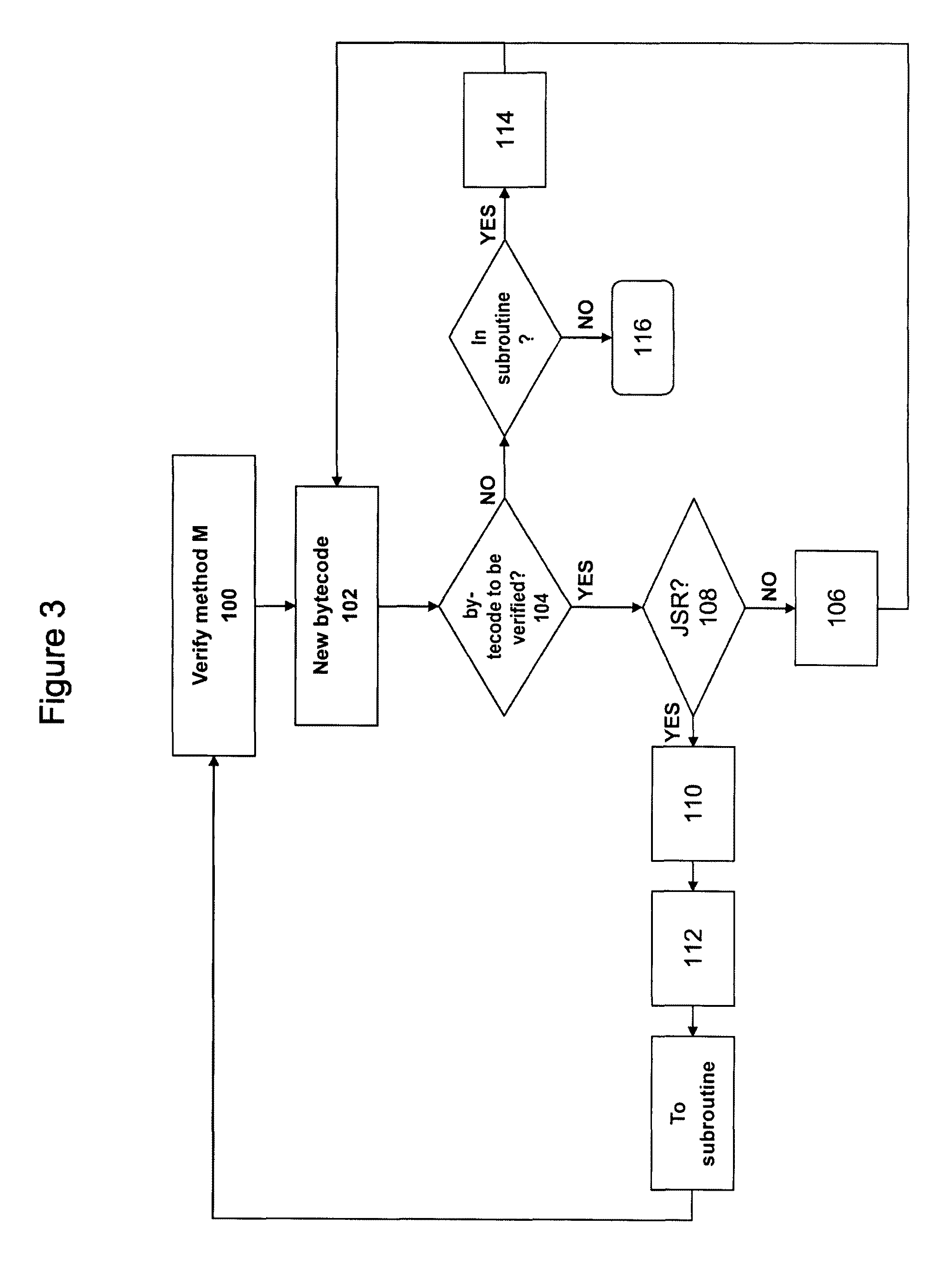Method of verifying pseudo-code loaded in an embedded system, in particular a smart card
a technology of embedded systems and pseudo-codes, applied in the direction of specific program execution arrangements, computer security arrangements, program control, etc., can solve the problem that the size of information is not compatible with the size of available memory in most portable electronic devices, and achieves good compression ratio, small ram resources, and optimized memory consumption during backup.
- Summary
- Abstract
- Description
- Claims
- Application Information
AI Technical Summary
Benefits of technology
Problems solved by technology
Method used
Image
Examples
Embodiment Construction
[0048]In the implementations given below by way of example, the Java (Registered Trademark) subroutines called by JSR instructions are merely one example of subprograms that can be called generally and to which the invention relates.
[0049]With reference to FIG. 2, the card module 1 comprises a microprocessor 2 controlling a non-volatile memory 3, e.g. of the flash type, a read-only memory (ROM) 4, and a random-access memory (RAM) 5.
[0050]The ROM 4 stores the bytecode verifier computer programs 41 and the virtual machine 42 making it possible to execute the bytecode. The term “virtual machine” is used to mean a machine which, during execution of bytecodes, manages a stack 51 and registers 52 in RAM 5. The stack 51 is a top-access memory in which data is stacked and from which data is unstacked. The registers 52 are memory registers having indexed access or free access: any information in the registers can be accessed.
[0051]A program or application 31 to be verified is stored in the f...
PUM
 Login to View More
Login to View More Abstract
Description
Claims
Application Information
 Login to View More
Login to View More - R&D
- Intellectual Property
- Life Sciences
- Materials
- Tech Scout
- Unparalleled Data Quality
- Higher Quality Content
- 60% Fewer Hallucinations
Browse by: Latest US Patents, China's latest patents, Technical Efficacy Thesaurus, Application Domain, Technology Topic, Popular Technical Reports.
© 2025 PatSnap. All rights reserved.Legal|Privacy policy|Modern Slavery Act Transparency Statement|Sitemap|About US| Contact US: help@patsnap.com



